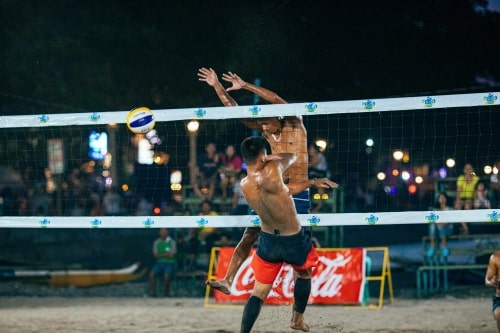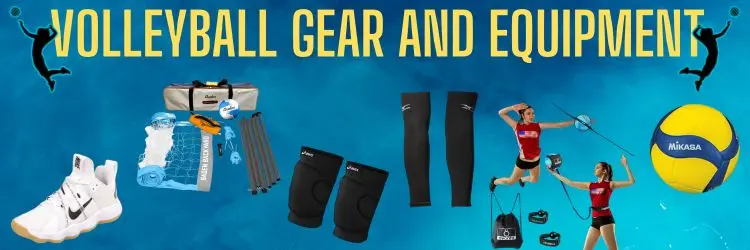Volleyball Spiking Rules

Volleyball Spiking Rules: Offensive and Defensive Considerations
Spiking, one of the most thrilling and dynamic aspects of volleyball, is not merely about delivering a powerful attack; it is also governed by a set of rules and regulations to ensure fairness and safety in the game. This article explores the intricate rules of spiking, highlighting both offensive and defensive considerations.
Understanding Spiking in Volleyball
Spiking involves hitting the ball with force from above the net’s height toward the opponent’s court. It is a skill that requires precision, power and timing. Spikes are used as offensive weapons to score points and can also strategically disrupt the opponent’s defensive setup.
Rules and Regulations Governing Spiking
Legal Contact with the Ball
When spiking, players must ensure:
- No Prolonged Contact: The ball must be struck cleanly and cannot rest momentarily on the player’s hand or fingers. Carrying, catching, or throwing the ball constitutes a violation.
- Hand Positioning: Players can use their open hand to spike but must avoid illegal hits, such as using their fist or striking the ball with a closed hand.
Net Rules
Spikers must adhere to strict net rules:
- Avoid Net Touches: While executing a spike, the player cannot touch the net with any part of their body or clothing. Doing so results in a fault.
- Crossing the Center Line: The spiker’s body or foot may not cross the center line beneath the net. However, incidental foot contact on or slightly over the line is permitted if it does not interfere with the opponent’s play.
Attack Line Restrictions
The attack line, situated 3 meters (or 10 feet) from the net, separates the frontcourt from the backcourt. Rules regarding the attack line include:
- Back row Players: Players positioned in the back row cannot jump and attack the ball above the net’s height if they are in front of the attack line. However, they may attack from behind the attack line.
- Front row Players: Front row players are free to spike from any position, provided they do not violate other rules, such as net touch or crossing the center line.
Ball Trajectory
- The ball must pass over the net within the antennae and land inside the opponent’s court. Spikes that:
- Land outside the boundary lines or hit objects outside the play area are considered faults.
- Pass outside or touch the antennae result in a turnover.
Blocking Considerations
Blocking rules intersect with spiking regulations:
- A spiker must be mindful of blockers reaching over the net. The ball must be struck cleanly without interference from the opposing team unless the ball is fully on their side.
- Offensive players are permitted to use their spike as a tool to outmaneuver blockers by targeting gaps or weaker positions in the defensive wall.
Double Hits
After spiking, the spiker’s team must avoid committing a double hit violation. A single player cannot hit the ball twice consecutively unless the first contact is part of a block.
Offensive Considerations in Spiking
Timing and Approach
Timing is crucial for executing an effective spike. Offensive players typically use a three step or four step approach to gather momentum before jumping and striking the ball. This approach enhances the height and power of the spike.
Placement Over Power
While power spikes are effective, strategic placement can often yield better results. Skilled spikers aim for:
- Gaps in the defensive formation.
- The edges of the court, forcing defenders to stretch or dive.
- The opponent’s backcourt, especially if the defenders are positioned closer to the net.
Mixing Techniques
A good spiker varies their attacks to keep the opponents guessing. Techniques include:
- Hard driven Spikes: Delivering high speed attacks to overwhelm defenders.
- Tips: Lightly tapping the ball over blockers to exploit uncovered areas.
- Roll Shots: Executing soft, arcing hits to bypass blockers and land the ball in the middle of the court.
Awareness of Opponent’s Formation
A spiker must constantly observe the opponent’s defensive setup. Key considerations include:
- The position and strength of blockers.
- The libero’s positioning and reaction time.
- Areas left unguarded due to rotational movement or defensive shifts.
Defensive Considerations Against Spiking
Blocking
Blocking is the first line of defense against a spike. Key aspects include:
- Positioning: Blockers must align themselves with the spiker’s approach angle.
- Timing: Jumping too early or too late can render the block ineffective.
- Hands and Arm Placement: Blockers should keep their hands strong and angled downward to deflect the ball into the opponent’s court.
Digging
When the ball bypasses the block, defensive players must be ready to dig. Effective digging involves:
- Anticipation: Reading the spiker’s body language and approach to predict the ball’s trajectory.
- Body Positioning: Staying low with knees bent and weight evenly distributed to react quickly.
- Hand Technique: Using a flat platform created by the forearms to deflect the ball upward.
Rotational Defense
Teams often employ rotational defensive strategies to counter spikes. These include:
- Shifting players to cover potential attack zones.
- Assigning the libero to handle most defensive responsibilities due to their specialized skills.
- Ensuring constant communication among players to avoid overlapping roles.
Common Violations and Their Consequences
Attack Hit Faults
An attack hit fault occurs when:
- A back row player attacks from within the attack line area.
- The ball is struck above the net’s height by a player reaching over from the opponent’s side.
Net Faults
Touching the net during or after the spike leads to an immediate point for the opposing team.
Illegal Hits
Any illegal hit, such as carrying or prolonged contact, results in a fault and turnover.
Training and Practice for Spiking
Strength and Conditioning
Effective spiking requires physical fitness. Exercises that enhance leg strength, core stability and upper body power are crucial.
Drills for Precision
Drills focusing on ball control and placement help spikers improve accuracy and consistency. Examples include:
- Target spiking drills, where players aim at specific areas of the court.
- Approach and jump drills to refine timing and technique.
Mental Preparation
Confidence and focus are essential for successful spiking. Visualization techniques and game simulations can help players mentally prepare for high pressure situations.
Conclusion
Spiking is a cornerstone of volleyball that demands a blend of physical prowess, strategic thinking and adherence to rules. Whether on the offensive or defensive side, understanding and mastering the rules and techniques associated with spiking can significantly impact a team’s performance.
By combining skillful execution with a thorough grasp of regulations, players can elevate their game and contribute to their team’s success.


